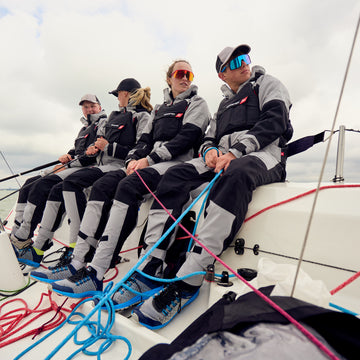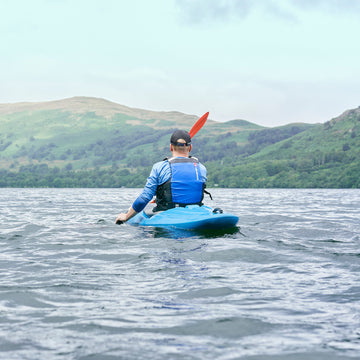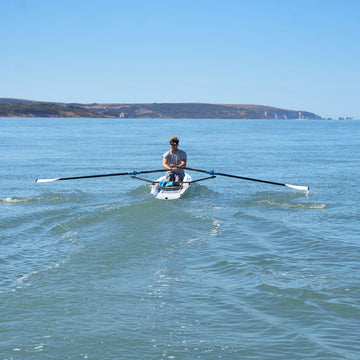- A soft attachment allows the block to take up any angle in line with the load applied which in turn means the block can be used to it’s maximum efficiency and reduces any danger of damage to the block.
- A soft attachment is lighter than a stainless strap or shackle and is kinder on contacting materials such as carbon.
- A soft attachment makes a block more versatile to nonstandard applications.
Ronstan have a complete range of 20 & 30mm Orbit lashing blocks but looking at the basic single blocks RONSTAN RF25109 SERIES 20 ORBIT LASHING BLOCK and RONSTAN RF35101 SERIES 30 SINGLE LASHING HEAD BLOCK I can suggest some simple attachment methods.


Looking at the RF25109, 20mm Orbit Lashing block, the easiest method of attachment is to use the 2mm line supplied with it going through the hole in the head, through the central hole of the sheave and back out through the hole in the head and tying the line together as illustrated above. I, however, prefer to use another method which allows you to get the block as close to your fixing point as required. Use a short length of 3 mm Dyneema and feed it through the central sheave hole and head of block, ensuring there is a stopper knot on the end of the line.

Then take the line through you securement on the boat or spar. 
Take the line back through the head and then the opposite side of the block. Pull the line end tight to reduce the loop as required and end with a stopper knot. I have found this works particularly well for control line blocks on boats such as 29er’s and Moth’s where the lead block needs to take a variety of angles.
 If you require the block to have one tail for securing, ie. As part of a cascade kicker system or as below for take up lines on a Musto Skiff , then use 2.5 or 3mm dyneema threaded through the block as before and then splice to complete.
If you require the block to have one tail for securing, ie. As part of a cascade kicker system or as below for take up lines on a Musto Skiff , then use 2.5 or 3mm dyneema threaded through the block as before and then splice to complete.

The RF35101, 30mm Orbit Lashing block, is slightly different in that the head of the block is solid with no hole in the head to accept a line through. This is primarily a strength reason, as with this block it can take load by securing just round the head of the block and not necessarily going through the hole in the centre of the sheave for moderate load applications (mainsheet etc.). So securing could be by simply tying or splicing.

The RF35101 block also offers the ability for it to be used with a standard shackle to secure, like the conventional stainless strap block. The shackle to be used for this purpose is the RONSTAN RF1850S 3.2MM WIDE D SHACKLE - FOR 20MM LOOP TOP BLOCKS and this can be used through either quadrant of the block for versatility. 
The double and triple version of the 30mm Lashing block also allows the head to be used with either a shackle or with RONSTAN RF9003-07 DYNEEMA LINK - FOR 40MM SINGLE ORBIT BLOCKS by removal of the pin in the head.


Ronstan have recently introduced a High Load version single of the 20mm and 30mm blocks (RF25109HL & RF35019HL) these have maximum working loads of 300Kg and 550kg:


Note the high load version of the 30mm lashing block has holes in the head to allow a 1mm supplied line to hold the securing in position. These blocks are for high load applications such as Laser kickers.

Written by Jason Belben in May 2020.











 Select Store
Select Store
 EU
EU
 US
US

